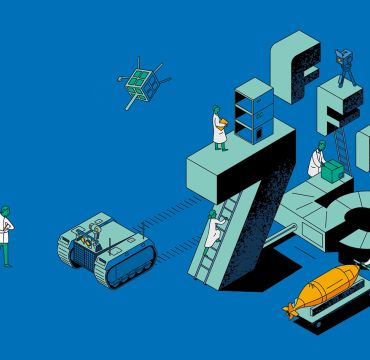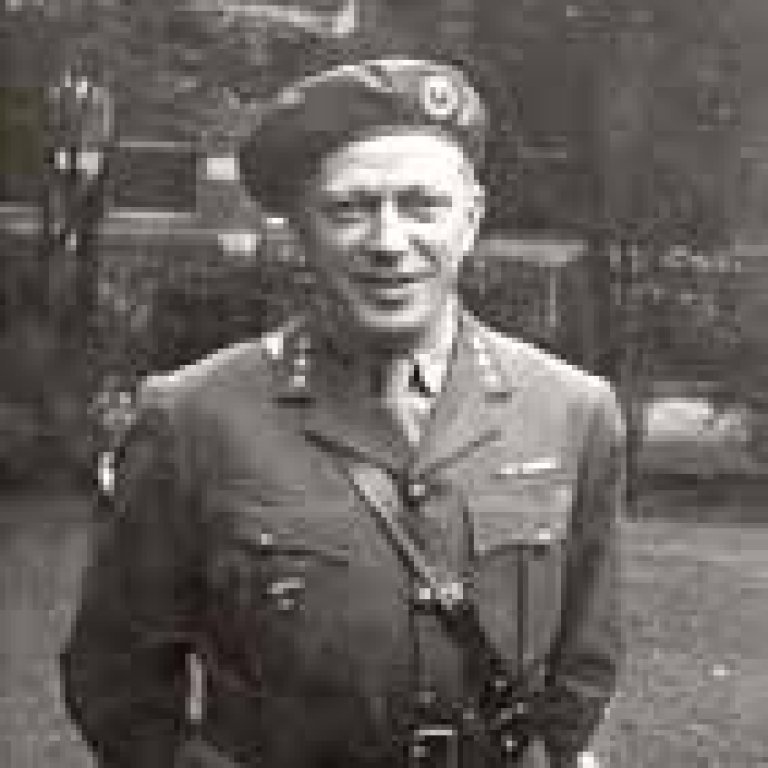Made in England
He was a chemistry professor and resistance figure. Already in the first year of the war, Leif Tronstad began thinking aloud about something the British had and that Norway was missing: military research.

It all began in England. The idea of a Norwegian military technology research institute was raised already in 1941.
The war was underway. The Germans were succeeding on all fronts. One of the researchers who had fled to the United Kingdom, however, was certain: The end result would be different. And the Norwegian Armed Forces would then require such an institution. Its establishment was essential. Otherwise, the country would probably not be able to keep up with the accelerating development in the field of military technology.
The researcher behind this idea was Leif Tronstad. In London, he was affiliated with the Norwegian High Command and held the rank of Major. He would become one of the most famous figures in the resistance.
Leif Tronstad
Tronstad had an important role in the Norwegian heavy water sabotage operation at Vemork in 1943. This was a plant that he had personally been involved in planning. Now, he had to plan its sabotage.
Already in 1948, the operation became the subject of a feature film, in the Norwegian-French production Operation Swallow: The Battle for Heavy Water. Hollywood tackled the operation in 1965 in The Heroes of Telemark with Kirk Douglas in a supporting role. The operation also became a popular tele-vision series on Norwegian public broadcaster NRK in 2015.
The Bærums-born Tronstad had started out as a chemist. He had studied in both Berlin and Cambridge. He was a professor at NTH. In the United Kingdom, he had become a known and well-respected name in the preceding decade. This would come to benefit Norway.
FFI's predecessor
The Norwegian Government-in-exile appointed Tronstad head of the Technical Committee in the Norwegian High Command (FOTU). This was the precursor to FFI. FOTU’s goal was to recruit Norwegian technologists and scientists for military research in the United Kingdom. The Committee was to serve as the Norwegian Armed Forces’ High Command’s advisor on military-engineering matters.
The core of FFI existed in the form of 30-40 Norwegian engineers with a Master of Science and scientists who worked at British research institutes. Very many of them became part of the institute’s early research staff. The defence leadership in the Norway they had left behind did not prioritise science and technology development.
In the 1930s, there was no organised research in the Norwegian Armed Forces, whatsoever. Older military leaders did not think technological expertise should take precedence over traditional, professional military knowledge. However, if the World War had proved anything, with the atomic bomb as the most terrifying example, it was that science and defence research had now become essential.
The natural leader of the newly established FFI could well have been Leif Hans Larsen Tronstad. This would not be the case. He wanted to be in the field, rather than behind a
desk. From late 1944, he led an expedition of Norwegian paratroopers from Linge's Company.
They operated in the mountain ranges in Telemark. Barely two months before the end of the war, this ended in tragedy. In a mountain cottage near Møsvatn Lake in Telemark, Tronstad was killed in battle with Norwegian NS members, just weeks before his 42nd birthday.
The post-war period’s first Minister of Defence was also a remarkable resistance figure: Milorg leader Jens Christian Hauge became an enthusiastic and important contributor to the establishment of FFI.
The Norwegian Defence Research Establishment was just an idea in Leif Tronstads mind in 1941. Five years later, FFI had become a reality. Thanks to a group of young Norwegian researchers and engineers in the British war laboratories, the road had been paved for the scientific institution of the Norwegian Armed Forces. It would become one of Norway’s most important research institutes. In April 1946, the Storting unanimously adopted the historic decision.
FFI was born.


